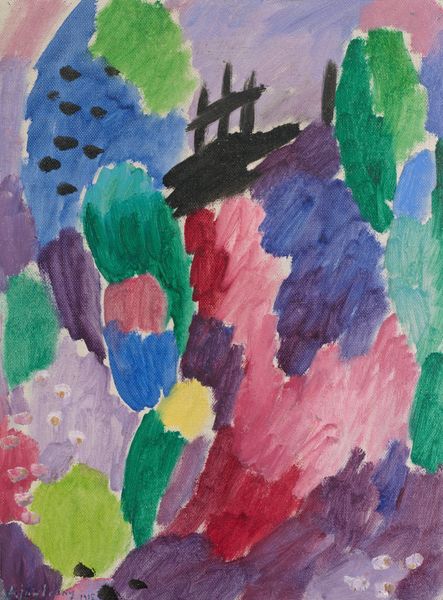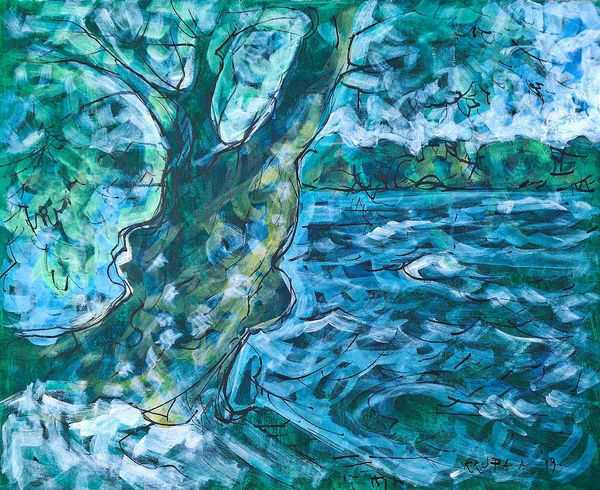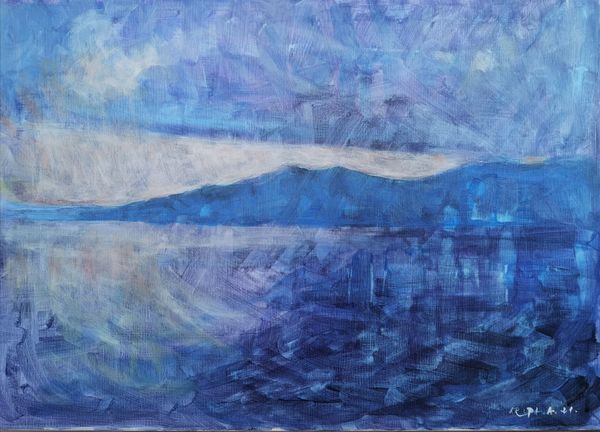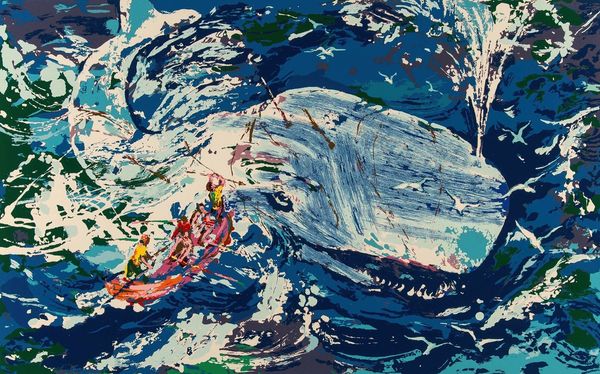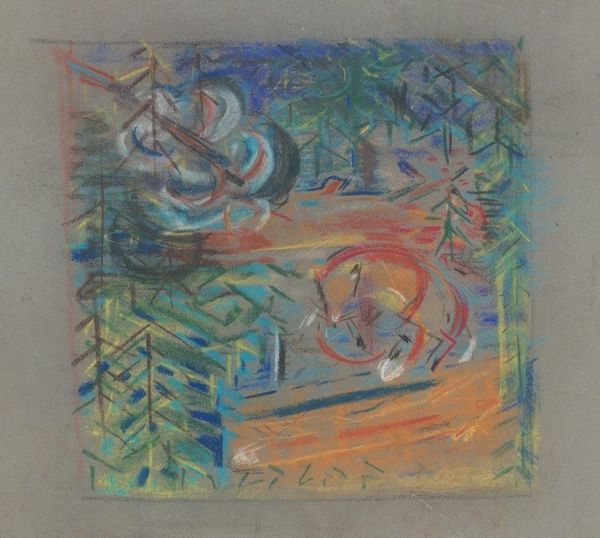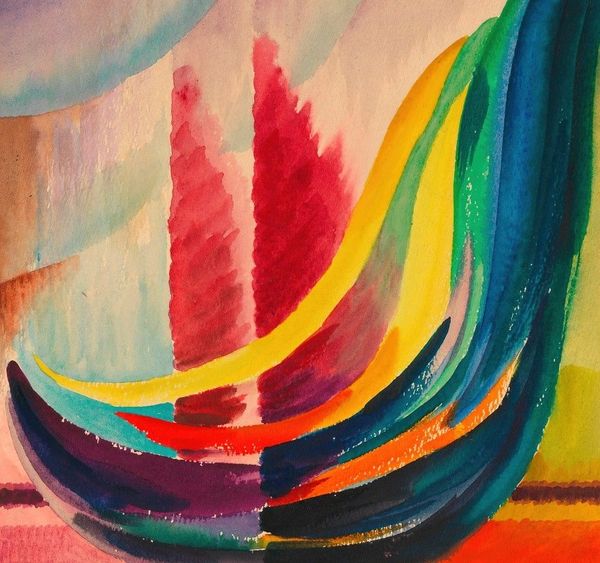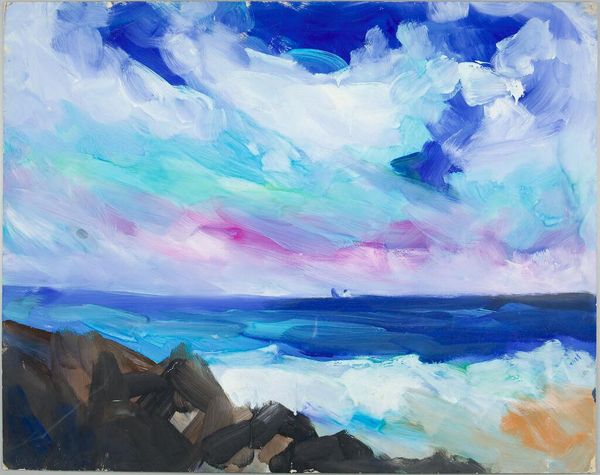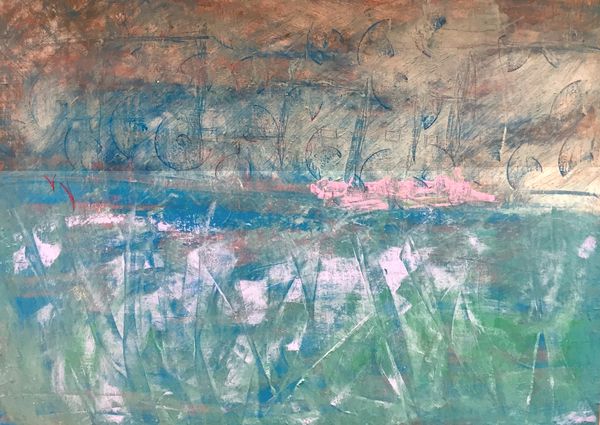
Dimensions: 21 x 15 cm
Copyright: Creative Commons NonCommercial
Curator: Before us is Alfred Freddy Krupa's 2017 work, "A children's book illustration," rendered in acrylic on canvas. Editor: Well, it’s certainly… vibrant. The energetic brushstrokes and bold outlines give it a childlike quality, a certain naivete in its depiction of the sea and sky. The materials seem deliberately unsophisticated. Curator: Precisely. Observe how Krupa employs a Fauvist approach, emphasizing the expressive possibilities of color and form. The bright blues and yellows don't merely depict the sea and sun; they convey a mood, a feeling of exuberant play. Editor: I'm more intrigued by what appears to be its improvisational nature. The swift, unblended acrylic paint application indicates the artist didn't fuss over meticulous detail but prioritized swift execution. Consider the work involved, the rapid-fire creation suggesting production geared for broader audiences and perhaps less monetary gain. Curator: I see it rather as an intentional simplification. The geometry of the waves, the almost cartoonish depiction of the fish and the anthropomorphic sun, all distill the essence of these objects into their most recognizable forms. This resonates deeply with structuralist ideas about the underlying systems that shape our understanding of the world. Editor: Interesting you say that, it begs the question of why adopt this faux-naif aesthetic? Are we valorizing a so-called children's book aesthetic without appreciating the effort behind legitimate craft? After all, art is labor. How does this sit within a larger structure of production? Curator: While your focus on production is valid, I believe we mustn’t overlook the careful composition, where simplified objects symbolize an entire world, each stroke functioning to generate complex significations within this contained artistic ecosystem. Editor: But context remains important. This isn’t simply aesthetic; the decision to work within, or feign working within, the artistic traditions usually intended for children points to specific industrial processes that merit interrogation. Curator: True, but the enduring formal strengths reside in its orchestration of elements; those potent forms offer the viewer a powerful visual engagement, and the symbolic weight contributes substantially to any interpretations that will stem. Editor: So, an economic choice resulting in symbolic weight, you would say? The art world can feel more circular at times. Curator: Perhaps so. But it is undeniable, I think, that Krupa offers in the forms themselves considerable possibilities. Editor: To see how materiality can influence our interpretations and consider how art production sits firmly inside larger societal forces.
Comments
No comments
Be the first to comment and join the conversation on the ultimate creative platform.


